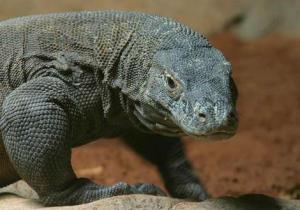
The Fauna of Indonesia consists of a high level of biodiversity due to its vast-size and tropical archipelago make-up. Indonesia divides into two ecological regions; western Indonesia is more influenced by Asian fauna, and the east is more influenced by Australasian. The Wallace Line—in fact, more an area known as Wallacea—notionally divides these two regions.
This unique blend of fauna in Indonesia is also affected by the diverse range of ecosystems, including beaches, sand dunes, estuaries, mangroves, coral reefs, sea grass beds, coastal mudflats, tidal flats, algal beds, and small island ecosystems.

Ecological issues have appeared in the nation due to the rapid industrialisation process and high population growth, resulting in lower priority level to preserve the ecosystems. The situation has worsened by illegal logging activity, in which resulting deforestation; while other problems, including high level of urbanisation, air pollution, garbage management and waste water services also contributing to the forest deterioration.

Although 45% of Indonesian region is still inhabited and covered by tropical forests, high growth of Indonesian population, with its industrialisation, has slowly affected the existence of fauna in Indonesia. Moreover, wildlife trade has also worsened the condition of Indonesia's charismatic fauna, including rhinoceross, orangutans, tigers, and certain species of amphibians. Up to 95% of animals sold in markets are taken directly from the wild, rather than from captive breeding stock; and more than 20% of the animals died in transportation. As of 2003, The World Conservation Union lists as endangered 147 mammals, 114 birds, 91 fish and 2 invertebrate species.

Some of the richest habitats have been protected since the early 20th century under Dutch Colonial law. Indonesia's first national parks have been established in 1980, and the network has been rapidly growing since, reaching a total of 50 declared national parks in 2009. Six of these are also World Heritage Sites and 3 are wetlands of international importance under the Ramsar convention.
This unique blend of fauna in Indonesia is also affected by the diverse range of ecosystems, including beaches, sand dunes, estuaries, mangroves, coral reefs, sea grass beds, coastal mudflats, tidal flats, algal beds, and small island ecosystems.

Ecological issues have appeared in the nation due to the rapid industrialisation process and high population growth, resulting in lower priority level to preserve the ecosystems. The situation has worsened by illegal logging activity, in which resulting deforestation; while other problems, including high level of urbanisation, air pollution, garbage management and waste water services also contributing to the forest deterioration.

Although 45% of Indonesian region is still inhabited and covered by tropical forests, high growth of Indonesian population, with its industrialisation, has slowly affected the existence of fauna in Indonesia. Moreover, wildlife trade has also worsened the condition of Indonesia's charismatic fauna, including rhinoceross, orangutans, tigers, and certain species of amphibians. Up to 95% of animals sold in markets are taken directly from the wild, rather than from captive breeding stock; and more than 20% of the animals died in transportation. As of 2003, The World Conservation Union lists as endangered 147 mammals, 114 birds, 91 fish and 2 invertebrate species.

Some of the richest habitats have been protected since the early 20th century under Dutch Colonial law. Indonesia's first national parks have been established in 1980, and the network has been rapidly growing since, reaching a total of 50 declared national parks in 2009. Six of these are also World Heritage Sites and 3 are wetlands of international importance under the Ramsar convention.


Except the tiger which is the 1st pic, everything else seems different for me
ReplyDelete